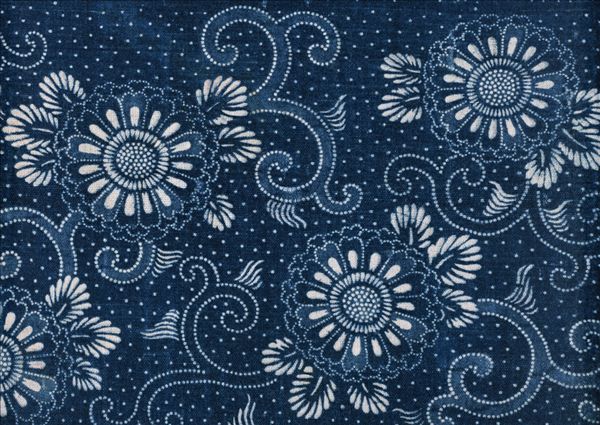
The Process of Wax-Dyeing
蜡染过程
Wax-dyeing originated from ancient "taxie", the principle of which is to make use of the dye-resistant property of beeswax or insect wax by tracing a pattern drawn on a white cloth in melted wax,and when the wax oil congeals, the cloth is soaked into the indigo vat for dyeing. What the cloth is property dyed,the cloth is taken out for drying so that the dye will permeate into the fibre. Finally the cloth is put into water and boiled until the wax is melted and removed from the cloth. Then the wax-dyed cloth is ready. As the wax is easily broken,the cloth is left with irregular cracks of color in the process of dyeing (commonly called ice cracks), creating a unique decorative effect. Wax-dyeing falls into two types: mono-colordyeing and double¬dyeing. In some areas,four to five colors are dyed by means of process printing, with the colors natural and diversified.
蜡染起源于古代的“窃”,其原理是通过跟踪绘制白色的布蜡融化的模式,以利用蜂蜡或虫蜡的防染性,而当蜡油凝固时,布浸透到蓝靛染缸里染色。布是属性染色,布被取出进行干燥,以使染料渗透到纤维中。最后布被放入水中,煮沸,直到蜡熔化并从布中除去。然后,布蜡染色准备就绪。因为蜡容易破裂,布被留下颜色的染色(通常称为冰裂纹)过程中不规则,创造独特的装饰效果。蜡印染分为两类:单色染色和多色染色。在一些地区,四至五种颜色同时染色,色彩自然和多样化。












